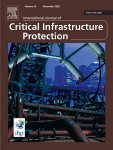The wireless network jamming problem subject to protocol interference using directional antennas and with battery capacity constraints
 Article Status: Published
Article Status: PublishedPublication Year: 2022
JD Huff, WB Leonard, HR Medal. (2022). International Journal of Critical Infrastructure Protection 39, 100572
[External Link]
Wireless networks support the operation and maintenance of a variety of critical infrastructure, and keeping these networks functional in the face of adversarial adversity is a paramount concern of infrastructure managers. Supporting these networks’ continued operability requires a robust understanding of wireless-network functionality, including of the ways in which adversaries may seek to jam such networks using recently developed capabilities. However, past work on wireless network jamming subject to protocol interference has focused on using omnidirectional antennas for the target and the jamming attack nodes and has not considered battery-capacity impacts on the success of these jamming efforts. Based on a field test of an ad hoc network performed by Ramanathan et al. (2005) in which the authors found that directional antennas offer an “order-of-magnitude improvement in the capacity and connectivity of an ad hoc network,” the work in this field should be extended to include directional antennas. By incorporating directional antennas, analysts may more realistically model antennas present in everyday use. In addition, battery capacity of the wireless network nodes can impact the effectiveness of a jamming attack and should be considered. By considering battery capacity, researchers are sure to take into account real-world scenarios in which energy limitations might affect actual network performance. The mathematical model discussed in this paper demonstrates the way in which network jamming is affected by directional antennas, battery capacity, and node density to determine how these factors would impact a robust jamming attack. Particularly noteworthy results include the finding that high battery capacity can offer as much as half an order of magnitude of improvement in data transmission over lower battery capacity in certain cases. These results show that the model could be used to aid decision makers in understanding how to design a network that is robust against jamming attacks.

